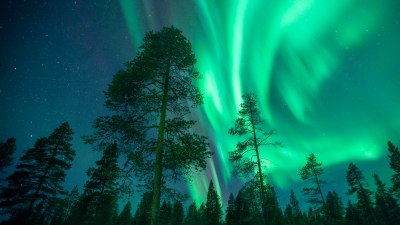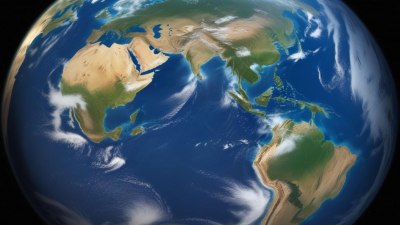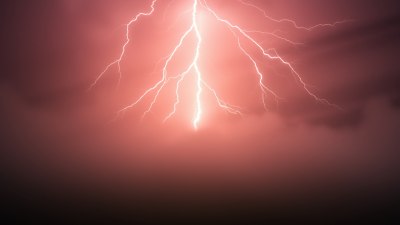The Weather Behind the Northern Lights What Makes the Sky Dance
Explore the weather phenomena that create the mesmerizing Northern Lights and uncover the science behind their beauty.

The Northern Lights, or Aurora Borealis, are one of nature's most breathtaking spectacles. These vibrant displays of color dancing across the night sky capture the imagination of millions every year. But what exactly causes this stunning phenomenon? The answer lies in a complex interplay of solar activity, the Earth's magnetic field, and our atmosphere.
To understand the Northern Lights, it is essential to delve into the science behind them. The sun emits a continuous stream of charged particles known as solar wind. As these particles travel through space and reach Earth, they collide with gases in our atmosphere, primarily oxygen and nitrogen. This interaction results in the beautiful light displays that we associate with the Aurora Borealis. The type of gas and the altitude at which these collisions occur determine the colors we see.
The Role of Solar Activity
Solar activity plays a critical role in the intensity and frequency of the Northern Lights. The sun goes through an approximately 11-year solar cycle, during which solar activity varies from quiet periods to times of heightened solar activity, known as solar maximum. During solar maximum, the sun emits more charged particles, increasing the likelihood of strong auroras. Conversely, during solar minimum, auroras may be less frequent and less intense.
One of the most significant solar events affecting the Northern Lights is a solar flare. When the sun experiences a solar flare, it releases an immense amount of energy and charged particles into space. If these particles are directed towards Earth, they can lead to spectacular auroral displays. Also, coronal mass ejections (CMEs) are large expulsions of plasma and magnetic field from the sun's corona that can cause extensive disturbances in the Earth's magnetosphere and intensify the Northern Lights.
The Earth's Magnetic Field
Another crucial element contributing to the Northern Lights is the Earth's magnetic field. The Earth functions like a giant magnet, with magnetic poles that guide the charged particles from the solar wind toward the poles. As these particles enter our atmosphere, they follow the magnetic field lines, which funnel them into the polar regions. This process is why the Northern Lights are most commonly seen in high-latitude regions near the Arctic Circle, such as Alaska, Canada, and parts of Scandinavia.
Weather Conditions and Their Influence
While solar activity and the Earth's magnetic field are fundamental to the occurrence of the Northern Lights, local weather conditions also play a critical role. Clear, dark skies are essential for optimal viewing. Clouds, precipitation, and city lights can obstruct the view of the auroras. Thus, checking the local weather forecast is essential for anyone hoping to experience this natural wonder in its full glory.
Winter months are often the best time to see the Northern Lights, particularly from October to March. During this time, the nights are long, and the skies are typically clearest in many of the Northern regions. This availability, combined with lower humidity levels, allows for better visibility of the auroras.
Atmospheric Conditions
In addition to weather patterns, atmospheric conditions also influence the appearance of the Northern Lights. Solar wind strength and solar activity can lead to fluctuations in the ionosphere, the upper layer of the Earth's atmosphere that plays a crucial role in the formation of auroras. When the solar wind is strong, it causes an increase in ionization in the ionosphere, leading to brighter and more dynamic auroras. Overcast skies can also suppress visibility, making it difficult to catch a glimpse of the dance of lights.
Another atmospheric phenomenon that complements the Northern Lights is light pollution, which can originate from urban areas. Even a small amount of light pollution can significantly diminish visibility of the auroras. Many enthusiasts recommend seeking out remote locations far from city lights to fully experience the awe-inspiring beauty of the Northern Lights.
Historical and Cultural Significance
Throughout history, the Northern Lights have sparked wonder and awe, inspiring countless myths and legends across cultures. Many indigenous peoples of the Arctic regions have their interpretations of the lights. For example, in Finnish mythology, the auroras are often seen as the spirits of the deceased or the reflections of the armor of Valkyries. In Norse mythology, they represented the glow of the shields of the Valkyries leading fallen warriors to Valhalla.
The Northern Lights have not only captured the imagination of various cultures but have also played a role in scientific advancement. Over the years, researchers have sought to understand this natural display, leading to breakthroughs in astrophysics, atmospheric science, and environmental studies. The importance of studying the auroras cannot be understated, as they help scientists understand the dynamics of the sun's influence on Earth.
Modern Observations and Technology
Today, technological advancements have facilitated a deeper understanding of the Northern Lights. Satellites and ground-based instruments are employed to monitor solar activity and predict auroral events. Organizations like the National Oceanic and Atmospheric Administration (NOAA) provide real-time updates on geomagnetic storms and auroral forecasts, helping enthusiasts plan their viewing experiences more effectively.
Social media platforms and aurora forecasting apps have also transformed the way people connect with the auroras. Users can share updates, photos, and tips, creating a sense of community among aurora hunters. Consequently, more people are becoming aware of when and where to witness this mystical spectacle.
The Future of Northern Lights Viewing
As climate change continues to impact the planet, the Northern Lights may evolve in ways we are only beginning to understand. Changes in atmospheric composition and decreasing polar ice could influence the visibility and frequency of auroras. In some regions, increased air pollution might hinder viewing opportunities, while in others, shifts in solar activity may enhance auroral displays. The future is uncertain, yet the Northern Lights remain a fascinating subject of scientific inquiry and a beacon of beauty for many.
In conclusion, the Northern Lights are a marvelous blend of solar activity, Earth's magnetic field, and atmospheric conditions that come together to create a stunning display in the night sky. Understanding the influences behind these celestial phenomena deepens our appreciation for the natural world and encourages curiosity about the universe. As we continue to explore the science of the Northern Lights, we unravel more of the mysteries of the cosmos—a true dance of nature's artistry in the sky, beckoning those eager to witness its glory.











